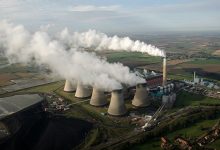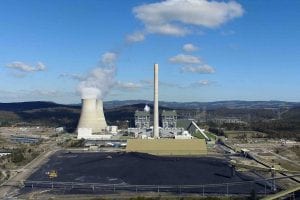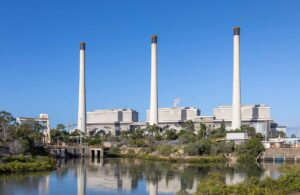Just five years after it was virtually given away by the NSW government, the Vales Point power station is set to receive an $11 million handout from the federal government to cover the costs of repairs to keep the coal-fired power station operating.
The decision to fast track support for the Vales Point power station – part of a deal between Canberra and the state government – was revealed by RenewEconomy earlier this week. And, according to reports in the Daily Telegraph it is a virtual fait accompli that taxpayers will cover more than half the bill for $20 million worth of repairs to the Vales Point’s turbines and heating systems.
It’s an astonishing deal for the power station’s owners, who purchased the 1,320MW Vales Point from the NSW government for just $1 million in 2015, but which was later valued at more than $730 million, and will now receive a handout of taxpayer funds to pay for maintenance and repairs that will extend the life of the power station..
As reported by RenewEconomy, the funds for Vales Point power station had been fast-tracked by the Morrison government as part of a deal struck with the NSW government, which saw the state government also commit to boosting gas production in return for additional funds to expand the state’s renewable energy capacity.
Federal energy minister Angus Taylor has said that he expects that any coal-fired power station that closes will be replaced with ‘like-for-like’ projects, placing pressures on operators and state governments to prop-up an ageing coal-fired generator fleet.
The Vales Point power station is half-owned by Trevor St Baker, who donated a combined $34,000 to the 2019 election campaigns of the Liberal and Nationals parties and has “received advice” that the power station has secured the fast-tracked funding under the federal governments Underwriting New Generation Investments scheme.
Australian Conservation Foundation’s climate change program manager Gavan McFadzean said the flow of taxpayer funds to the Vales Point coal-fired power station was an insult to communities recovering from climate change fuelled bushfires.
“While Australians express alarm about the climate-driven bushfire crisis, our Federal Government is looking to fuel future fires with public money to prop up coal-fired power,” McFadzean said.
“Burning coal is the number one cause of climate change – extending the life of coal-fired power stations means more extreme weather like this summer’s devastating fires.”
“To put public money into coal-fired power is an insult to bushfire-affected communities, many of which have been leading the calls for action to tackle climate change,” McFadzean added.
In the last two weeks, the Morrison government has committed more than $15 million of public funds towards coal-fired generation projects, despite it becoming increasingly evident that there is little appetite within the private sector for financing new coal projects.
The news comes as new analysis from think tank The Australia Institute shows there is just one coal-fired power station currently under construction across all of Australia, Europe and Northern America, but this hasn’t stopped the Morrison government pushing taxpayer funds into coal projects and single-handedly propping up the sector.
“It beggars belief that policymakers are continuing to bend over backwards trying to prop up our ageing coal industry rather than seek to support industries that are currently facing enormous costs as a result of climate change, including agriculture and tourism,” Merizan added.
The only coal-fired power station under construction in Europe is the Datteln 4 project in Germany which is already ten years behind schedule. The 1,100MW power station is expected to commence first generation early next year but has been subject to intense focus from protestors who plan to interrupt the power station’s operation.
The Australia Institute’s climate and energy director Richie Merzian said that Morrison government is potentially being “cruel” by raising the hopes of communities of a new coal-fired power station while most developed countries are turning to wind and solar, as it pays for new feasibility studies in a Queensland power station and upgrades at the Vales Point power station.
“It is cruel to raise the hopes of our regional workforce that new construction and power plant jobs are imminent when all the research shows that coal power plants are uneconomic. Across Australia, North America and Western Europe, there is just one coal plant being built — and it is running nine years behind schedule,” Merzian said.
“No similar ultra-supercritical coal plant has been built in Australia, a tell-tale sign that such a project is simply uneconomic.”
While coal advocates within the Coalition like to point to the number of coal-fired power stations under construction in countries like China and India, when it comes to countries with economies similar to Australia, there virtually zero interest in expanding coal generation capacity.
The leaked findings of a report of the Liddell Taskforce that emerged this week found that it would cost $300 million to keep the ageing coal-fired generator open for an extra three years, without any improvement to the power station’s reliability.
The taskforce found that taxpayers would be forced to wear the costs of extending the life of the Liddell power station as no private investor would be willing to stump up the cash.
Last week, the Morrison government announced that it would commit $4 million in public funds to pay for a feasibility study into a coal-fired power station in Collinsville, in North Queensland.
In an update to its assessment of new power station costs, the CSIRO found that solar, wind and storage remain by far the cheapest sources of new electricity generation capacity in Australia, raising doubts about the ability for a new coal-fired power station to be financially viable without government support.







